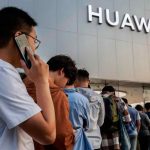I’ve known Michael Rosman at the Center for Individual Rights for almost 30 years; he has litigated many important cases, including with regard to racial preferences, and was one of the lawyers in Grutter v. Bollinger. I’m therefore delighted to pass along his short reactions to Students for Fair Admission v. Harvard and Students for Fair Admission v. UNC, focused on the Court’s opinion and the concurrences; all the remaining text of the post is Michael’s:
A Tribute: My first thought was of Will Consovoy, the great attorney who led the charge in these cases and who died at a young age before he could see them come to fruition. The outcome is a tribute to him—as well as the great firm he helped create (Consovoy McCarthy), the oral advocates (Patrick Strawbridge and Cameron Norris), Ed Blum, who helped put the cases together and kept them afloat, and all of the many attorneys who worked for so many years on them.
Grutter Is Gone: I agree with Justices Thomas and Sotomayor that the Court essentially overruled Grutter. The most obvious (but not the only) support for this is the Court’s description of the rule against using race as a “negative.” First, the Court did not say that in Grutter or, as far as I can tell, in any other race-conscious affirmative action case, although it seems obvious that invidious discrimination is unconstitutional. As support, the Court’s opinion cites a part of the Grutter decision that precludes race-conscious decisions from “unduly burdening” others, which strikes me as a different concept. And this becomes crystal clear when the Court holds that using race positively for members of one race is tantamount to using it as a “negative” for all others in any zero-sum game. (Slip op. 26.) Which I think would apply to virtually all kinds of race-conscious decision-making, both within higher education and without.
So, the conclusion I draw is that the Court did not explicitly overrule Grutter because it did not want to directly address Justice Sotomayor’s substantial stare decisis arguments.
The Missing Race?: The creation of a new “negative” requirement allowed the Court to sidestep one of the trickier issues in the cases. In the Harvard case, plaintiff had argued that Harvard had discriminated against Asians in the sense that, as a group, Asians were treated even worse than whites. (As a group, Asians had lower “personal ratings” than whites.) The district court had concluded that Harvard had not discriminated against Asians. Perhaps not wanting to wade into whether the district court abused its discretion in that holding, the Supreme Court never mentioned the issue.
Gorsuch’s Revenge?: When Bostock was decided, a few astute observers like Cass Sunstein suggested that its strict adherence to text might mean trouble for race-conscious affirmative action. That did not play out in the Court’s decision, but it did in Justice Gorsuch’s separate concurrence, who argued that Bostock (a Title VII case) had essentially undermined all of the opinions interpreting Title VI (like Bakke) that had equated Title VI’s standard with the Equal Protection Clause. Gorsuch’s concurrence was joined by Justice Thomas, who, of course, dissented in Bostock. I think it speaks to Justice Thomas’s antipathy to the admissions policies at issue that he was willing to hold his nose and join Justice Gorsuch’s Bostock-heavy opinion (while, of course, maintaining that he had not changed his mind about Bostock).
The Case of the Missing Case: Speaking of Justice Thomas, his separate (and lengthy) originalist defense of the outcome went heavy on the history of Reconstruction—including a history of the Civil Rights Act of 1875. (Thomas op. 13-15). Then, when discussing the Supreme Court’s own role in the demise of Reconstruction, he starts with Plessy. Conspicuously, he skips right over The Civil Rights Cases, the 1883 decision that declared significant sections of that same 1875 Act unconstitutional. (Justice Jackson’s similar historical review made no such omission.) Justice Thomas’s omission may relate to the fact that he has joined two opinions (City of Boerne v. Flores and S. v. Morrison) that reaffirmed the analysis of Section 5 of the Fourteenth Amendment (and its limitation on Congressional power) in The Civil Rights Cases. I suspect Justice Thomas distinguishes the parts declared unconstitutional in The Civil Rights Cases from other parts, but I think an explanation was called for.
Seriously?: In Grutter, decided in 2003, the Court noted that it had been twenty-five years since Bakke, and that it “expected” that the use of race would no longer be necessary to further the interest of diversity. The Court used this to create what I assume was a straw man argument it (probably unfairly) attributed to the universities: that the use of race was sanctioned until 2028. The Court said that the “expectation” was oversold. OTOH, Justice Kavanaugh went all in on the 25-year limit, claiming that the “twenty-five year” reference in Grutter was, in fact, a time limit on how long race-conscious decision-making could be used. I don’t think anyone involved in the Grutter case (myself included) thought the expectation was anything more than that, and apparently neither did Patrick Strawbridge arguing for SFFA (Sotomayor dissent at 53, citing Harvard case transcript at 56).
Why Try?: In each of Grutter, SFFA v. Harvard, and SFFA v. UNC, there was a trial. In Grutter, plaintiff won. In the two SFFA cases, defendants won. In all three cases, the Supreme Court reversed and, in my view at least, pretty much ignored any findings of fact from the district courts. Lesson for district court judges? Deny those summary judgment motions if you want, but you’re probably wasting your time. Trials are not easy for anyone. My sympathies to all the lawyers who had to go through the trials in the two SFFA cases.
The post A Lawyer Who Litigated Grutter Comments on the Court’s College Admission Racial Preferences Cases appeared first on Reason.com.






